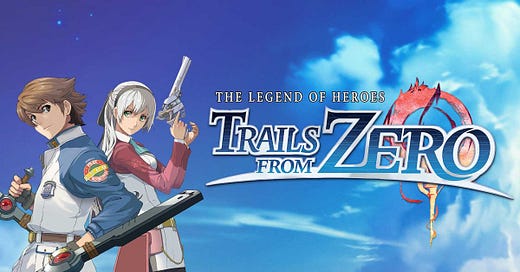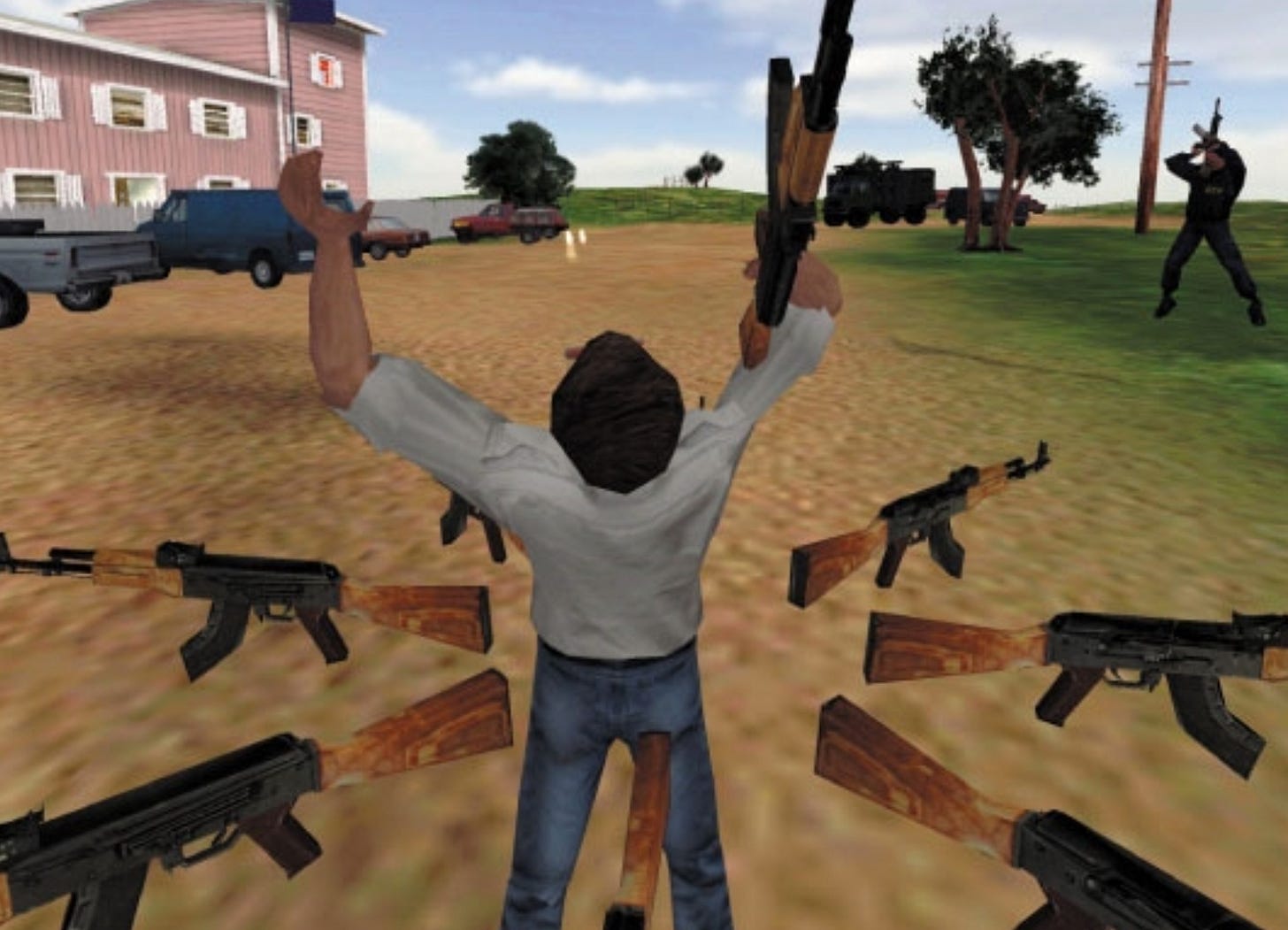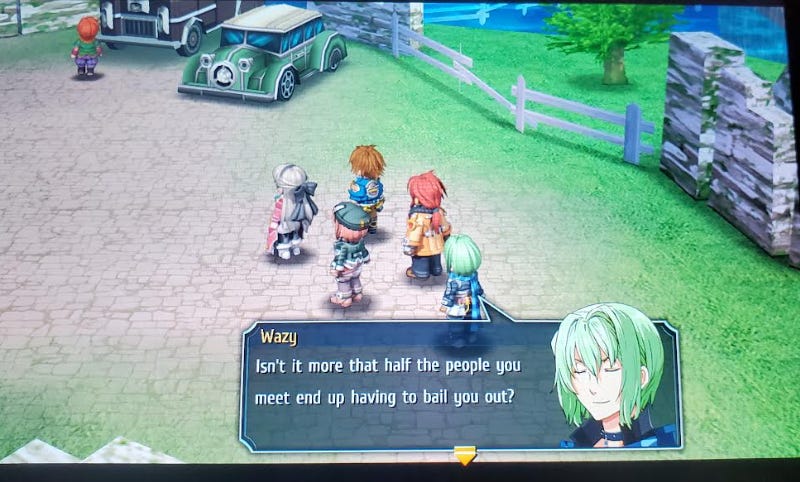Author’s Note: According to Substack, this post is “too long for email”. Thus, readers are advised to read this article directly on the website.
Can video games be art? With many people having grown up on video games almost as much, if not more than movies and books, this is a question that a lot of people had been asking for quite some time. And the late movie critic Roger Ebert once answered the question with a resounding “no!”.
To prove his point, he even wrote an entire article. Feel free to read it for yourself for context.
Mr. Ebert wrote his article back in 2010, three years before his death. I remember hearing about it; I also remember hearing about the reaction people had to it. In fact, that reaction was why I remembered that article in the first place. To be more specific, someone I followed on Twitter brought up the whole thing a few months ago (things tend to remain in my head for some time).
As someone who grew up on video games myself, I initially dismissed the article as the opinions of a boomer without so much as reading a word of it. This was around the time that article was released, so I still had the stench of nerd culture with me. Also, I didn’t care for Mr. Ebert at the time. I remember having some bit of animosity against the guy; I don’t remember why, but I just remember not liking him. For whatever reason.
But as the years passed, my opinions shifted. Personally, I have soured on the gamer/nerd “culture”. In fact, there is a strong temptation for me to just agree with Mr. Ebert in order to “own the nerds”.
That being said, I won’t be doing that. I want to tackle this question with the utmost seriousness, and I started by actually reading Mr. Ebert’s article. And to my surprise, Mr. Ebert’s article turned out to be very reasonable. In fact, his objection to the idea of ‘video games as art’ was not simply the ramblings of a literal baby boomer.
Mr. Ebert covered many interesting topics in the article, and he first started on what constitutes art.
What is Art?
In a world where a banana being affixed to a wall with a duct tape is considered as art, this is a legitimate line of inquiry. What is art? In order to ask the question of ‘can video games be art?’ we need to ask the question ‘what is art?’.
This is where we get to Mr. Ebert’s interlocutor (to use the word loosely), Kellee Santiago, a video game designer (at least at the time of the article’s writing). Ms. Santiago believed that not only can video games be art, but it already is art. And her position was based on a definition of art found in Wikipedia; it went as follows: “Art is the process of deliberately arranging elements in a way that appeals to the senses and emotions”. As one might expect, Mr. Ebert was not impressed. And rightly so; by that definition, pretty much everything can be art, making the term ‘art’ worthless.
A better definition of art was made by Plato, who believed art to be an imitation of nature. Mr. Ebert expanded on this, saying that art “grows better the more it improves or alters nature through a passage [of] what we might call the artist’s soul, or vision”. I think this is a solid definition. As author David V. Stewart once said, art is communication.
I would add to Mr. Ebert’s thoughts and define art as the means in which a person (or persons) employs his vision, creating an imitation of nature in order to communicate something to the audience.
Examples of Video Games as Art
Of course, if art is communication, then video games can be considered as art. I agree. Though I pick the side of Mr. Ebert over Ms. Santiago over the definition of art, I actually agree with Ms. Santiago that video games are art.
Unfortunately, her examples left much to be desired.
In order to support her case, Ms. Santiago chose three video games. First was a third-person shooter called Waco Resurrection. This is a game “in which the player, as David Koresh, defends his Branch Davidian compound against FBI agents”. Then we got Braid, a puzzle platformer wherein “you can’t die” because the player has the ability to “go back in time and correct [his] mistakes”. Ms. Santiago’s final example was Flower, a game in which the player controls a wind (really) and navigate a pretty looking environment of fields and grasslands. I would call this game a walking simulator, but you don’t exactly walk.
Again, Mr. Ebert was not impressed.
With the three examples chosen, I notice that they’re all what I would call ‘artsy’ games. It’s the video game equivalent of arthouse films that culture critics would rave about while the general public wouldn’t even know it exists.
Seriously. I’m a guy who plays a lot of video games, including indies, and I didn’t know anything about these games until I read Mr. Ebert’s article. Not even an inkling.
As such, I haven’t played any of these games. Of course, they could all be good games for all I know. And heck, they could even have good stories (though I’m pressing X to doubt on Flower). However, I can’t help but wonder why Ms. Santiago didn’t pick a JRPG or something story-heavy in order to make her case.
My Example
Instead, my example will be a game that, while not exactly mainstream, is not completely obscure, either.
Released in Japan in 2010, The Legend of Heroes: Trails from Zero (Zero no Kiseki in the original Japanese) did not see a Western release until 2022. This game is part of Nihon Falcom’s fantasy JRPG (Japanese Role-Playing Game) series, The Legend of Heroes. It’s also part of a sub-series of that series known simply as Trails or Kiseki.
It’s a little complicated, I know.
The Trails series is no Final Fantasy, but it does have its fans. In other words, it’s not some artsy game that none outside the Council of Guardians have ever heard of.
Why did I choose this game as my example? Simple, because I just finished it last year and I’m currently playing the sequel, Trails to Azure. Some may say that it’s an excuse to talk about the game. But I’d like to think that I’m just making a demonstration that you don’t have to dig deep to show that ‘video games can be art’.
Now let’s get to the brass tacks. Don’t worry, there will be no real spoilers to the game.
Trails from Zero takes place in Crossbell, a city-state stuck between two competing superpowers: the Erebonian Empire and the Republic of Calvard. Meanwhile, Crossbell City, the capital, is a rapidly growing city that suffers from the negative effects associated with urban growth and modernization.
Our hero is Lloyd Bannings, a rookie detective who found himself shanghaied into a newly formed police division that none had any faith in. Corralled into this scheme with Lloyd were three other people, each of them also recent additions to the Crossbell State Police Department (CPD):
Elie MacDowell, the mayor’s granddaughter
Randy Orlando, a soldier with a dubious reputation, and
Tio Plato, a young (read: underaged) genius tech-wiz
These four were the inaugural members of the CPD’s Special Support Section (SSS). It’s a little hard to describe what the SSS actually is. Think of them as a mix of police officers, private investigators, and mercenaries. Unfortunately, the closest equivalent I can think of are the rescue teams from the Pokémon Mystery Dungeon series. Not exactly helpful, I know. But the vagueness does play into the theme that the SSS are a bunch of misfits put together, as can be seen from its members.
If you want to see how video games can be art, just look at the artwork of the SSS members. Take a good look at each of the characters and guess what their personalities are. Don’t overthink it.
I’m willing to bet some cash that you’re right on the money.
Now, look at the four as a whole. As you can see, none of the SSS members dress like actual police officers, with the exception of Lloyd. And even he was dressed more like a JRPG protagonist’s idea of a police officer. Which certainly makes sense, given that Lloyd is a JRPG protagonist. My point is that these pictures certainly communicates to us what these characters are like and what the SSS are: unconventional police officers.
Now given the misfit status of our heroes, and the title of the game (Trails from Zero), you might think that it’s about the SSS rising from being laughingstocks to respected members of the Police Department. A sort of Hero’s Journey, if you will.
And you would be right.
But in addition to that, the game also addressed various issues such as political corruption, urban decay, the problems associated with rapid urbanization, modernization, nationalism, and drug abuse.
This isn’t to say that it’s the most insightful piece of media I’ve ever experienced. It’s no Shakespeare nor Dostoevsky, let’s be clear on that. But it was able to tackle some deep political and sociological issues in ways that I can’t help but be impressed at.
More importantly, the game did so while giving us four characters that you grow to care about in the 40-50 hours you spent to finish the game.
So then, problem solved, right? Video game is art, thanks to Nihon Falcom? Well…
Believe it or not, Mr. Ebert actually had an answer to this kind of objection. Which makes sense, given that story-heavy video games have existed since the 90s (maybe even the 80s):
Santiago might cite an immersive game without points or rules, but I would say then it ceases to be a game and becomes a representation of a story, a novel, a play, [a] dance, [and] a film.
I can imagine that if Mr. Ebert had run into Trails from Zero or the Metal Gear series, known for its infamously long cutscenes, then he might say that the story parts of those games ceases to be a game and becomes a representation of a story like a play or a film.
This brings me to a phenomenon very common in video games, the ludonarrative dissonance.
Ludonarrative Dissonance
To wit, the ludonarrative dissonance is a fancy way of saying that the story and the gameplay don’t match. And this is a very common thing with story-heavy games such as RPGs.
I know that I’ve been singing nothing but praises for Trails from Zero. Now, I’ll tell you what really grinds my gears about this game: the fact that this game does the “you beat the boss in-game but not in the story” trick so often. Seriously. If I have a dollar for every time I beat the boss in game, but then the cutscene shows Lloyd and the SSS with their backs against the wall before they were bailed out or the boss decided to spare them, then I’d have enough cash to buy a Big Mac meal with large fries and drink.

Now I understand that the SSS being the underdog was a major part of the game’s narrative. That’s why our heroes had their butts handed to them a lot. Fine. But it’s still frustrating whenever I was able to defeat the boss with relative ease only for Lloyd and co. to go, “oh no, this guy’s too strong for us.”
For the sake of transparency, I will disclose that I played this game on Normal. Now I can already hear the objection: I should have played the game on higher difficulties. Sounds good, except that objection misses the point. Unless I am told otherwise, I see Normal as a game’s intended difficulty.
Personally, I don’t mind being able to breeze through Trails from Zero. I like to enjoy my video games and not bang my head against the wall because I’m stuck on a boss that I couldn’t beat in a hundred tries.
The issue isn’t that the game’s too easy. The issue is that the gameplay doesn’t match the story. Not just in the battles’ difficulty but also in some of the playable characters. At some point in the game, the player will gain access to characters that the story present to be much more powerful than the main four. And in one case, he is acknowledged as such in a cutscene.
In the gameplay, though? These guys are just about as strong as the rest of the party.
Now I don’t want to pick on Trails from Zero for this since it’s hardly the only JRPG guilty of this. Nor is JRPG the only genre that does this. There’s a reason why “Master Chief in the books” is a meme among Halo fans.
I doubt the late Mr. Ebert knew about ludonarrative dissonance, but it’s interesting how he was able to touch upon it in a roundabout way. And the difference between “game” and “art” will be the key to answering the question of ‘can video game be art?’
A Game is not Art
One theme in Mr. Ebert’s article that I noticed was the idea that ‘games are not art’. And this makes sense if you think of art as something communicative. Just because something looks pretty doesn’t mean it’s art. For example, take a look at this World Cup goal Brazil scored against Serbia. It’s a beautiful goal, no doubt. But what was Richarlison the goalscorer trying to communicate here? Nothing, really, other than he really wanted to win the game. The same could be said for those beautiful goals scored by Lionel Messi or Cristiano Ronaldo or whoever.

Thus, you can say the same thing about video games, and by that, I mean the ones that involves gameplay. What were the developers trying to communicate in games like Fortnite or PUBG or FIFA or Madden?
But this isn’t necessarily a bad thing. Near the end of the article, Mr. Ebert raised an important question:
Why are gamers so intensely concerned, anyway, that games be defined as art? Bobby Fischer, Michael Jordan and Dick Butkus never said they thought their games were an art form.
Conclusion
As you can see, the question of ‘can video games be art?’ is more complicated than meets the eye. As much as I want to give a definite ‘yes’ or ‘no’ to this question, I cannot do that. On one hand, video games are capable of narratives that rival the likes of movies and even books. On the other hand, video games qua games are like sports, and sports should not be confused for the arts. Thus, I will simply say that parts of video games are indeed art while others are not.
It’s a cop-out, I know.
So where to go now? If video games are to be seen as a serious “art form” what should be done? A perfect place to start is on harmonizing story and gameplay elements. Perhaps ludonarrative dissonance cannot be eliminated entirely, but it sure can be minimized.
This doesn’t mean ditching the gameplay that makes JRPGs like Trails from Zero fun (and yes, that’s a fun game despite my gripes). To explain, I’ll go back to Mr. Ebert’s point about how athletes never thought their games to be an art form. While that was a cool one-liner, the late Mr. Ebert really got his categories confused there. Sure, we shouldn’t consider Michael Jordan to be an artist, but what about Vince McMahon?

Thanks for reading. Please consider supporting my work through one of the following:
Get the novel, Inquisitor’s Promise. Available on Amazon, Lulu, and Laterpress.
Tip via Buy Me A Coffee.
Bitcoin: bc1qydz05wsjqmuhqv6yu6zr0l45wewzhgkg96xqt0
Thank you in advance for your support, it keeps me writing and helps me considerably. Germanicus Publishing is a reader-supported publication. To receive new posts and support my work, consider becoming a free or paid subscriber.













Huh, interesting! I've not seen this question come up for years, and had rather assumed it was settled a decade or two ago. Which is why Ebert's ramblings were a bit strange even at the time.
The 'is [insert thing] art?' question is always tedious, in my opinion. It's a nonsense, because art tends to be very personal. One person trying to define art to another person can only ever be reductive.
I make no particular distinction between movies, paintings, music, games, comics, books, theatre or anything else. Some of it is good, some of it is bad. In all cases, it's a human trying to communicate something to other humans, and that's what makes it interesting.
I've not really seen anyone involved in making or playing games ask the 'BUT IS IT ART!?' question for years. I don't think it matters. The only people that raise the question tend to be people who are heavily invested in other mediums and for some reason feel threatened by a newer form. The same way comics were dismissed for decades. The same way rock music was dismissed. Radio, TV, film, etc etc etc. There's always a reactionary element at play, regardless of the context.
Thanks, Michael, a good read and discussion.
An art is just a work performed to a standard. The difficulty lies in the broad English term "game". When everything from chess to Twister is described with the same word, it's hard to nail down a hard and fast definition.
That said, being that every video game is a piece produced according to established standards, yes, a video game is an artwork.